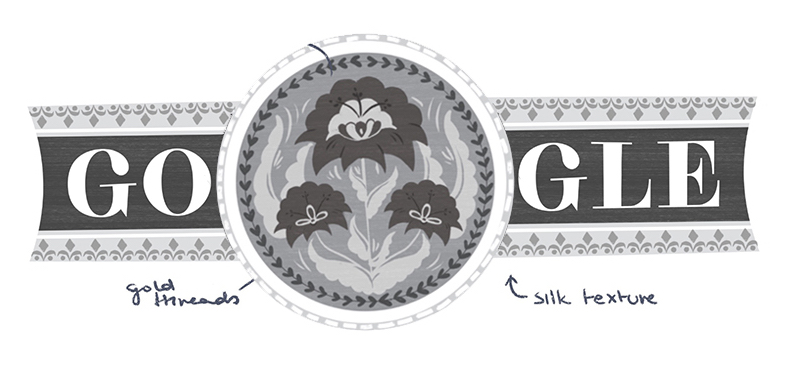Today’s Doodle depicts Malaysia’s national flower in honor of Malaysia’s Independence Day, known locally as
Hari Merdeka.
On this day in 1957, the Federation of Malaya became a sovereign state after many years of British rule. Tunku Abdul Rahman, Malaysia's first Chief Minister, read an official declaration at Kuala Lumpur’s Stadium Merdeka before a crowd of some 20,000 people.
Soon after the establishment of the new Southeast Asian nation, Malaysia adopted the hibiscus rosa-sinesis as its
bunga raya, which translates literally as “celebratory flower” to reflect the celebration of unity in a multicultural nation. With its 5 petals representing the 5 principles of Malaysia’s national philosophy or rukun negara, the flower appears on much of the country’s currency. The Doodle art evokes the flower through the Malay tradition of metallic
songket embroidery, a technique for embellishing fabrics with gold, long prized by nobility and royals.
The Malaysian flag, locally known as
Jalur Gemilang or “Stripes of Glory,” will fly proudly today on government buildings, private homes, and vehicles. The flag’s 14 alternating red and white stripes, as well as its 14-pointed star, represent the member states and territories of the federation.
Festivities are centered in the capital city of Kuala Lumpur, but concerts, sporting events, and cultural exhibitions take place all over the country. The main Merdeka Parade includes a royal procession and elaborate floats as well as a military contingent, topped off with an evening of fireworks.
Selamat Hari Merdeka!
Early drafts of the Doodle




Today’s Doodle depicts Malaysia’s national flower in honor of Malaysia’s Independence Day, known locally as Hari Merdeka.
ReplyDeleteOn this day in 1957, the Federation of Malaya became a sovereign state after many years of British rule. Tunku Abdul Rahman, Malaysia's first Chief Minister, read an official declaration at Kuala Lumpur’s Stadium Merdeka before a crowd of some 20,000 people.
Soon after the establishment of the new Southeast Asian nation, Malaysia adopted the hibiscus rosa-sinesis as its bunga raya, which translates literally as “celebratory flower” to reflect the celebration of unity in a multicultural nation. With its 5 petals representing the 5 principles of Malaysia’s national philosophy or rukun negara, the flower appears on much of the country’s currency. The Doodle art evokes the flower through the Malay tradition of metallic songket embroidery, a technique for embellishing fabrics with gold, long prized by nobility and royals.
The Malaysian flag, locally known as Jalur Gemilang or “Stripes of Glory,” will fly proudly today on government buildings, private homes, and vehicles. The flag’s 14 alternating red and white stripes, as well as its 14-pointed star, represent the member states and territories of the federation.
Festivities are centered in the capital city of Kuala Lumpur, but concerts, sporting events, and cultural exhibitions take place all over the country. The main Merdeka Parade includes a royal procession and elaborate floats as well as a military contingent, topped off with an evening of fireworks.
Selamat Hari Merdeka!